Что нового
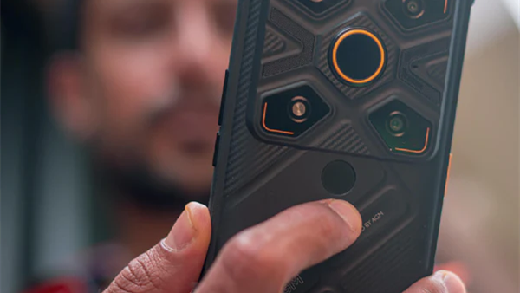
Что нового
Qualcomm Snapdragon 480-powered AGM Glory G1S now available with both thermal imaging and night vision
Outdoor mobile devices pioneer AGM is back with another rugged handset that will join the Glory lineup, namely the Glory G1S. Already available for purchase, this 5G heavy-duty phone sports a thermal imaging camera, as well as a 20 MP night vision image sensor, a 48 MP main image snapper, and a 2 MP macro camera.
-Codrut Nistor
As most brands in this niche begin adding 5G devices to their portfolio, AGM intros a 5G rugged Android phone as well. The brand-new AGM Glory G1S is powered by the Qualcomm Snapdragon 480 chipset and features both a night vision sensor and a thermal imaging camera.
In addition to the aforementioned processor, the AGM Glory G1S sports a 6.53-inch LCD display with 2,340X1,080 pixels, no less than five cameras (thermal imaging with 256X192 pixels and 25 Hz refresh rate, 48 MP main image shooter with Sony IMX582 sensor, 20 MP night vision camera with a single infrared LED, a 16 MP selfie shooter, and a 2 MP macro camera), a 3.5 mm audio jack, one programmable button, as well as NFC and the usual set of connectivity features that any mainstream phone has to offer in 2022. The only memory/storage combination available is 8/128 GB, but the phone also supports microSD memory cards of up to 512 GB.
The AGM Glory G1S will ship loaded with Android 11 and weighs 315 grams (almost 0.7 pounds), which is quite reasonable for a handset rated IP68, IP69K, and MIL-STD-810H. This sturdy handset supports dock charging via four pins located on its back and has a 5,500 mAh battery. Right now, the price displayed on the official product page is US$699 for the Glory G1S and US$719 when acquired alongside the charging dock.
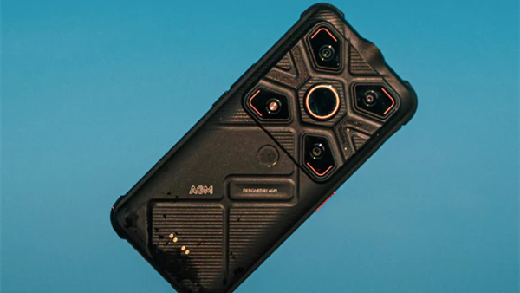
Что нового
The Phone With A Highest Resolution Thermal Camera - AGM Glory G1S First Look
Apr. 28, 2022 The newly released rugged smartphone AGM Glory G1S is a smartphone with a highest resolution thermal camera from the phone company AGM Mobile.
With a lighter body of 315 grams, AGM Glory G1S has a high resolution thermal camera 256 x 192 pixels, and 25 FPS refresh rate. G1S also equips Qualcomm's Snapdragon 480 5G, fluent and fast, making it one of the most rugged phones worldwide. With 256x192 pixels resolution, G1S has become one of the most advanced professional and clearest thermal imaging smartphones. And the other one is AGM Glory with the same thermal camera. Compared to traditional thermal imager companies, AGM this time challenged to break the boundaries between professional thermal imager and portable smartphone.
To provide more choices for AGM’s followers and thermal imaging lovers, AGM lighters G1S’s weight to make the products more convenient when recording thermal imaging. With the fast 5G connection and bluetooth, users could share the thermal photos or videos directly after testing. “Just like the transition between iPhone and iPod. iPod is a great music player, but the iPhone is a better iPod.” Austin, AGM Co-founder “Today, we are replacing heavy and inconvenient thermal imagers with a better phone, a phone that has all the advanced thermal imaging technologies. Grab it, tap it, and you have it.”
About AGM
AGM is a pioneer of outdoor mobile devices. In 2011, AGM launched the first-ever rugged smartphone, Rock V5, and started serving outdoor enthusiasts and workers. Later in 2018, AGM released the best performing rugged smartphone AGM X3. Now, AGM launched the G-series and is making a brave attempt to explore more possibilities in the rugged phone industry.
PR Contact
Samantha Liu, Head of North America PR Manager, AGM Mobile media@agmmobile.com
Best Mobile Thermal Camera with “256x192 Resolution”, “25 FPS Frame Rate”
AGM Glory G1S Is Lighter than AGM Glory Pro
Qualcomm Snapdragon 480
5G Frequency Bands
8GB Ram + 128GB Rom, expandable to 512GB
Sony 48MP Main Camera
Sony 20MP Infrared Night Camera
Android 11
5500mAh Long Lasting Battery

Что нового
AGM M7 4G LTE Smartphone Review
By John Perkins / Aug 24, 2021
A phone that can do everything you need and still hold up to the rigors of a rough and tumble lifestyle.
While today’s modern smartphones are great, there are often features about them that people deem unnecessary. For example, the lack of physical buttons is often a drawback for those who have less dexterity in their hands. They’re also often very fragile. This may lead some modern smartphone users to look for another option, one that counteracts some of the above features. This review looks at a smartphone that fits the bill for those criteria: the AGM M7 4G LTE.
First Impressions
Opening the AGM M7, I’m immediately brought back to the early days of mobile phones. It’s fairly chunky and has a large physical keyboard. It reminds me of cell phones circa 2005. However, there’s more to this phone than meets the eye.
While today’s modern smartphones are great, there are often features about them that people deem unnecessary. For example, the lack of physical buttons is often a drawback for those who have less dexterity in their hands. They’re also often very fragile. This may lead some modern smartphone users to look for another option, one that counteracts some of the above features. This review looks at a smartphone that fits the bill for those criteria: the AGM M7 4G LTE.
First Impressions
Opening the AGM M7, I’m immediately brought back to the early days of mobile phones. It’s fairly chunky and has a large physical keyboard. It reminds me of cell phones circa 2005. However, there’s more to this phone than meets the eye.
It’s actually running a simplified version of Android under the hood, and as a result, it has access to many useful applications that you may be using on a daily basis. Plus, it still has modern features, like a fairly high-quality 4 Watt speaker, Bluetooth, WiFi, and Type-C charging, meaning you can still use it the same way you would your typical modern smartphone.
There is something that’s glaringly wrong with any setup guides for this device. What I found was that you have to open the battery compartment on the back of the device and remove a plastic tab that’s covering the battery contacts, which prevents the device from turning on. That’s listed nowhere in the manual, so make sure you do that.
User Experience
Using the AGM M7 is a bit of a mixed bag. I like that it has a physical keyboard and touchscreen, as that means I can still navigate the device like I would like to. Using Chrome is fairly painless, with the only sore spot being that if I search Google as most would, I’m typing out a full question using a T9 keyboard, which I’m desperately out of practice to do.
I do really like the quality of the speaker. For a device that’s meant to be rugged, it’s certainly good enough. I can watch a video or have someone on speakerphone without it being distractingly bad.
I haven’t tested the military specifications for this device, but it certainly seems rugged. The specs say you can drop it from 2 meters, submerge it in 1.5 meters of water, operate it from -20 C to 60 C, and have it repel 99 percent of dust. It also gets up to 15.2 hours of talk time and 13 days on standby from just one single charge.
If you’re someone who works in construction or needs a phone that’s particularly rugged for whatever reason, I can absolutely recommend this device. Plus, if you wear large gloves, the icons on the touchscreen are large, and the T9 keyboard has chunky buttons, making it a great fit.
AGM M7 Cons
There’s one thing I really don’t like about the AGM M7. While it’s running a simplified version of Android, it’s nowhere near as customizable as Android. You can’t add or remove any applications, which means you’re stuck with Skype, WhatsApp, and TikTok on this phone forever.
Overall Verdict
If there’s one thing I’d have to commend the AGM M7 for, it’s being a rugged, traditionalist outlier in a fragile smartphone world. While I haven’t tested it, this phone certainly has the credentials to be a great phone for someone who works in a highly-demanding job like a construction worker or a mechanic and needs a tough phone.
The removable battery, dual sim cards, Wi-Fi, Bluetooth, and Type-C charging make the AGM M7 a surprising mix of a lot of the things that people really like about old and new smartphones. I also really like that it doesn’t proclaim to be anything it’s not – it’s clearly meant to be a simple, rugged phone that does its job and nothing else. Plus, for a price around $100 USD, you can’t beat it.

Что нового
6 Reasons to Consider Switching to an Android-Based Dumbphone
Want to cut down on your smartphone usage without giving it up entirely? You could consider an Android-powered dumbphone instead.
BY BERTEL KING
The Android ecosystem is vast, and these days you may be surprised just what gadgets are actually powered by Android. So it may come as less of a surprise that a number of minimalist or so-called dumbphones run Android too, even if in most cases you really won't be able to tell.
Does your next Android phone have to be a smartphone? Turns out, the answer is no. And deciding to go for something simpler may be a smart decision for you to make. Here are a few reasons why.
1. Innovative Designs
The smartphone landscape has arguably become rather dull. Each year we find ourselves faced with another crop of glass slates with slightly different screen sizes and a few color options.
Sure, there are a few phones trying out something new, such as foldable screens, but thanks to the software the experience still feels largely the same. You can take steps to turn your existing Android smartphone into a dumbphone, but that won't do a thing about the design.
RELATED:How To Turn An Android Phone Into A Dumbphone In 8 Steps
In the mid-2000s, what differentiated phones had less to do with software and more to do with hardware. Some phones flipped open like a clamshell. Some had full keyboards. You could get a phone that swung open like a razor blade or had adaptive e-ink buttons.
That innovation is starting to return to the world of minimalist phones. The Light Phone 2 is a credit card-sized touchscreen phone with an e-ink, text-based display. The Punkt phone also eschews fancy graphics, and is a traditional voice phone with LCD screen and tactile buttons.
You're no longer limited to Android-based dumbphones that look like variations of the Sonim XP3.
2. Excellent Support
For a handful of companies, minimalist phones serve as their flagship product. This is the case for the aforementioned Light Phone 2 and Punkt. These phones have been around for several years now, but they’re better now than they were at launch.
This is the opposite experience of most Android smartphones, where the device is at its best when it is brand new.
The Light Phone 2, for example, began as a phone that could make calls, send texts, and set an alarm. Today it can also play music, download podcasts, and provide navigation. There’s a calculator, and you can send texts more easily using voice-to-text.
As for the Punkt phone, the biggest addition has been Signal integration, making the Punkt MP02 one of the most private communication devices you can buy.
3. Longer Battery Life
Whether you opt for a minimalist phone or a flip phone with several apps, it will still not draw nearly as much power as a smartphone. You won’t need as much computing power, nor will you have as large a screen. This translates to longer battery life.
How much longer your battery lasts depends on which phone you choose. Since dumbphones don’t need as much power and aren’t as large, they tend to also come with smaller batteries. But some will still last for closer to a week, while others may power down after two or three days. Still, it’s unlikely you will need to scramble to find a charger.
4. Pocket-Friendly Sizes
The smaller size comes with another major benefit. If you carry your phone around primarily in your pants pocket, you may have watched those pockets fill out more and more with each phone upgrade. Modern phones are nearly the size of tablets. Meanwhile, pockets haven’t gotten any larger.
For many, dumbphones won’t just fit more easily into your pocket, they’re fit more comfortably in your hand. You will no longer have to slide the device around or contort your hand awkwardly to reach various corners of the screen.
All this means the phone commands less physical space on your body. When you leave the house, you will literally have less weighing you down.
5. Less Tracking
Most dumbphones don’t come with any form of private communications. Your carrier will have a record of every call you place and text that you send.
Some will let you sign into a chat app like WhatsApp or Messenger, but with these apps owned by Meta and other tech giants, it’s hard to regard them as private. In this area, dumbphones are a step back from smartphones.
Yet, at the end of the day, dumbphones still come with less tracking. On smartphones, most popular apps track your behavior in some form or another. They know what you read, where you go, what you buy, what you watch, and what you listen to.
You are often giving numerous companies deep insight into many aspects of your life, throughout most of your waking hours. And when you’re asleep, well, some company has likely pieced together when you generally go to bed and when you wake up. With a dumbphone, you simply aren’t generating this much data.
6. Fewer Distractions
All of those apps that aren’t tracking you? Well, they aren’t distracting you either. You don’t have an app prompting you to watch the latest viral video, listen to the next podcast, or read the article a stranger just linked to. It’s not just a lack of notifications either.
RELATED:How I Cut My Smartphone Usage In Half: 8 Changes That Worked
Without so many apps on your phone, there’s less temptation to pull out your device in general. When you`re standing in line at the store or sitting by yourself at a park, your phone is less likely to call for your attention.
Instead, you will think of other ways to enjoy the moment. Whether that’s starting a conversation, observing what’s going on around you, bringing a book, drawing, or some other activity that, in the end, is bound to feel more rewarding.
Most Android-based dumbphones hide any reference to Android entirely. The Sunbeam F1, for example, says it runs Basic OS. Others make a mention but remain highly customized, like the AGM M7. Some have apps, but you're very unlikely to find the Play Store. Installing apps isn't the point.
Will Your Next Android Phone Be a Dumb One?
There are tradeoffs to making this kind of switch. Adopting a dumbphone can mean doing without the ability to share photos or easily scan QR codes. These are just a few of the inconveniences you can expect. To set yourself up for success, make sure you're going in with your eyes wide open.
BY BERTEL KING
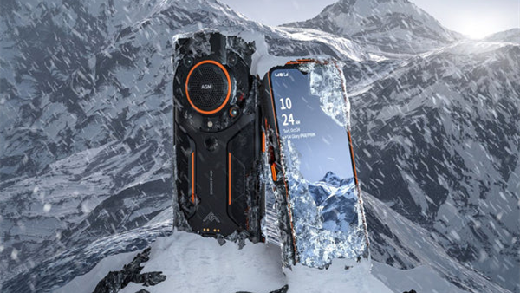
Что нового
AGM Glory: how smartphone breaks the dead-point of -40°C
HONG KONG, Oct. 28, 2021 /PRNewswire/ -- The newly released rugged smartphone AGM Glory is a bold move from the phone company AGM Mobile.
AGM Glory, one day power under -27℃. IP68, IP69K and MIL-STD-810H Certified.
Multiple independent cameras, a gigantic speaker, and an uneven surface, it doesn't follow any industrial norms. Glory equips Qualcomm's Snapdragon 480 5G, a speaker louder than your house alarm, industrial leading thermal imaging camera, and Sony infrared night vision camera, making it one of the most functioned phone in the world. It is worth mentioning that the thermal imaging is the fastest and clearest in the phone market. More than just functions, AGM this time challenged the coldness.
The most essential feature of Glory is its cold-resistance battery. The entire smartphone industry was constantly facing the threat of coldness. Most of the smartphones today won't last for 20 minutes under -20°C, because the lithium activity decays significantly under extreme coldness. As the competitors are effortless against the cold, AGM saw its chance.
4 years ago, AGM co-founder Austin came up with the idea of battery activation under extreme coldness. By redesigning the structure and the lithium battery activation solution, Glory can stay vital for a day under -27°C, even working a few hours in -40°C. Fulfilling the purpose of a rugged phone, Glory can greatly expand users' temporal and spatial border. The function of Glory might seem appealing, but Austin thinks otherwise.
"All the glamorous features aren't the reason why we are standing here. The key to success for us is always quality. We tried our best to keep the 0 DOA (Defective of Arrival) record. Up to this moment, we are still maintaining it." Austin said. "All we aimed for is to make our phones the most reliable companion in an outdoor environment and daily life. The whole point of a rugged phone is to challenge against a tough environment. It will be meaningless if the phone dies before the challenge."
About AGM
AGM is a pioneer of outdoor mobile devices. In 2011, AGM launched the first-ever rugged smartphone, Rock V5, and started serving outdoor enthusiasts and workers. Later in 2018, AGM released the best performing rugged smartphone AGM X3. Now, AGM launched the G-series and making a brave attempt to explore more possibilities in the rugged phone industry.
PR Contact
Angelina Wang, Head of PR Manager, AGM Mobile
media@agmmobile.com
SOURCE AGM Mobile Limited
Related Links
www.agmmobile.com

Что нового
AGM launches AGM M6 Rugged Phone with MIL-STD-810H Protection
Quoted from techtoyreviews by Ankeet Solanki | June 18, 2021
AGM, the best rugged smartphone manufacturer has been in the business of producing communication rugged cell phones that can withstand the toughest environments since 2008. On 18th June, they unveil their latest, highly anticipated feature phone, AGM M6.
Powerful Audio with Dynamic LED Circle
AGM is extending their technological innovation by bringing powerful sound to a rugged smartphone experience. The audio setup on AGM M6 is equipped with a mighty 3.5W speaker output that produces an overall dominant and loud sound. The most impressive point is the flashy LED light circle around the speaker, which can decorate your mood in the dark and dance to music.
Connectivity
AGM M6 comes with 4G frequency bands for enhanced connectivity, VoLTE and dual sim support. This gives you access to 4G, 3G and 2G connections.
Maximum Protection and More
Continuing its legacy of producing rugged smartphones, AGM extends their efforts on to AGM M6. The handset meets IP68, IP69K and MIL-STD-810H standards, enabling it to be waterproof (Up to 1.5M for 30 minutes), shock proof – withstanding falls from up to 6.5 ft on concrete, resistant to extreme temperatures – ranging from – 20°C to 60°C, and dust-proof even in the harshest environments.Apart from this, AGM M6 also holds true to the philosophy of making smartphone usage more convenient with its additional features. Charging is made easy and convenient with USB Type-C support and a desktop charging dock. It also offers a traditional keypad, coupled with 2.4 inches QVGA display to help you make the best use of this device.
AGM M6 price and availability
Originally priced at $79.99, AGM M6 has been discounted to a retail price of $69.99. Now available for purchase on the AGMMobile.com online website. At this price level, the M6 could be one of the best rugged smartphone on the current market.
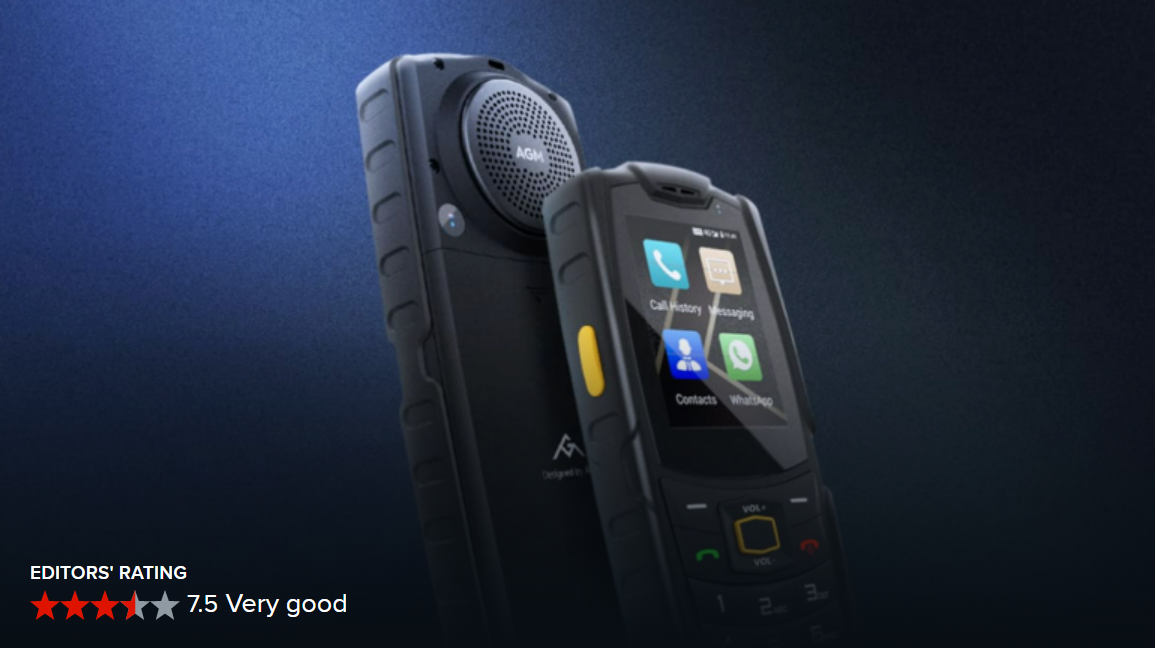
Что нового
AGM M7 rugged phone review: Affordable rugged retro phone goes back to basics
Quoted from zdnet.com by Eileen | May 12, 2021
PROS
✓Extremely loud 3.5W speaker
✓Very simple to use
✓Waterproof and shockproof
CONS
✕Few options for customization
✕Low-resolution camera
The AGM M7 rugged phone will survive most accidents, is easy to use, and with its 3.5W speaker, you will never miss a call again.
The form factor of the AGM M7 Android phone will take you back if you remember early mobile phones.
Reminiscent of an old Nokia 3110 classic, this rugged device has pushable number keys, a navigation button, and a removable battery. Remember those?
Yet, under the hood, this Android phone has all the features you need for a simplified mobile phone experience.
The AGM M7 has a MediaTek MT6739 processor and runs a simplified version of Android 8.1. The phone comes with 1GB of RAM and 8GB of ROM, and there is a removable 2,500mAH battery behind two layers of casing for extra protection from water ingress.
Behind the battery, there is space for three cards: Two SIMs and a microSD card slot for cards up to 128GB. It is 4G too, but if you have two SIMs, installed you can only have 4G on one of these cards and 2G on the other.
Be aware that there is a plastic film between the battery and the contacts which you need to remove before you can initially use the phone.
The AGM is a rugged IP68 phone which is waterproof at depths up to 1.5m for up to 30 meters and will stand a drop up to 2m onto concrete.
In the box, there is the phone, a USB Type-C to audio connecting cable, and a USB charging cable. Additionally, you can purchase a retro desktop charging dock to stand your phone in when not in use.
The camera is basic but functional. The rear camera is 2MB, and the front camera is 0.3MB. There is no flash for either camera.
Although this is far too low resolution for camera geeks, is it is perfectly adequate for people who do not want the fancy bells and whistles common to other phones but want a rugged phone that does basic tasks.
The AGM M7 comes preinstalled with a few consumer apps. You get WhatsApp, Facebook, Skype, TikTok, and Zello. Turn the M7 on and quickly get to the home screen.
You do not have to go through the process of adding your Google Account, and all of the other configuration features. Turn the phone on and get the home screen immediately. Clear the cache by long-pressing the star (asterisk) key for three seconds.
There is a large orange user-defined key on the left-hand side of the phone which can be configured for a few different actions such as Zello push to talk, invoking the camera, turning on the LED torch, or starting audio.
If you like your music loud, then you will be really impressed with the M7. There is a 3.5W speaker on the back of this relatively small phone.
And it is loud. Any elderly relative will have no problems hearing this phone ring, and music will reach anyone within a large radius of the phone.
I like the simplicity of this M7, and I like its rugged exterior. It has navigation by either key or touch, swiping, or touch press. For anyone with sausage fingers, misdialing will become a thing of the past.
I miss my email app, and Google Play is not installed on the phone to add other apps, but I probably use social media on my phone more than email anyway.
I can use the cable to sync my calendars and the Chrome browser is installed so I can get to webmail if I really need to.
For a simplified rugged phone, the AGM M7 really has most of the features that I probably need -- and a superbly loudspeaker if I'm in a noisy environment, or start losing my hearing.
The keys are comforting and the phone is easy to use -- albeit a little basic -- but it would certainly suit the needs of several of my older friends.
If your aging parents want a basic phone with push buttons and a simple interface, then buy them the AGM M7 for under $100. It will survive most accidents, is easy to use, and they will never miss a call from you again.
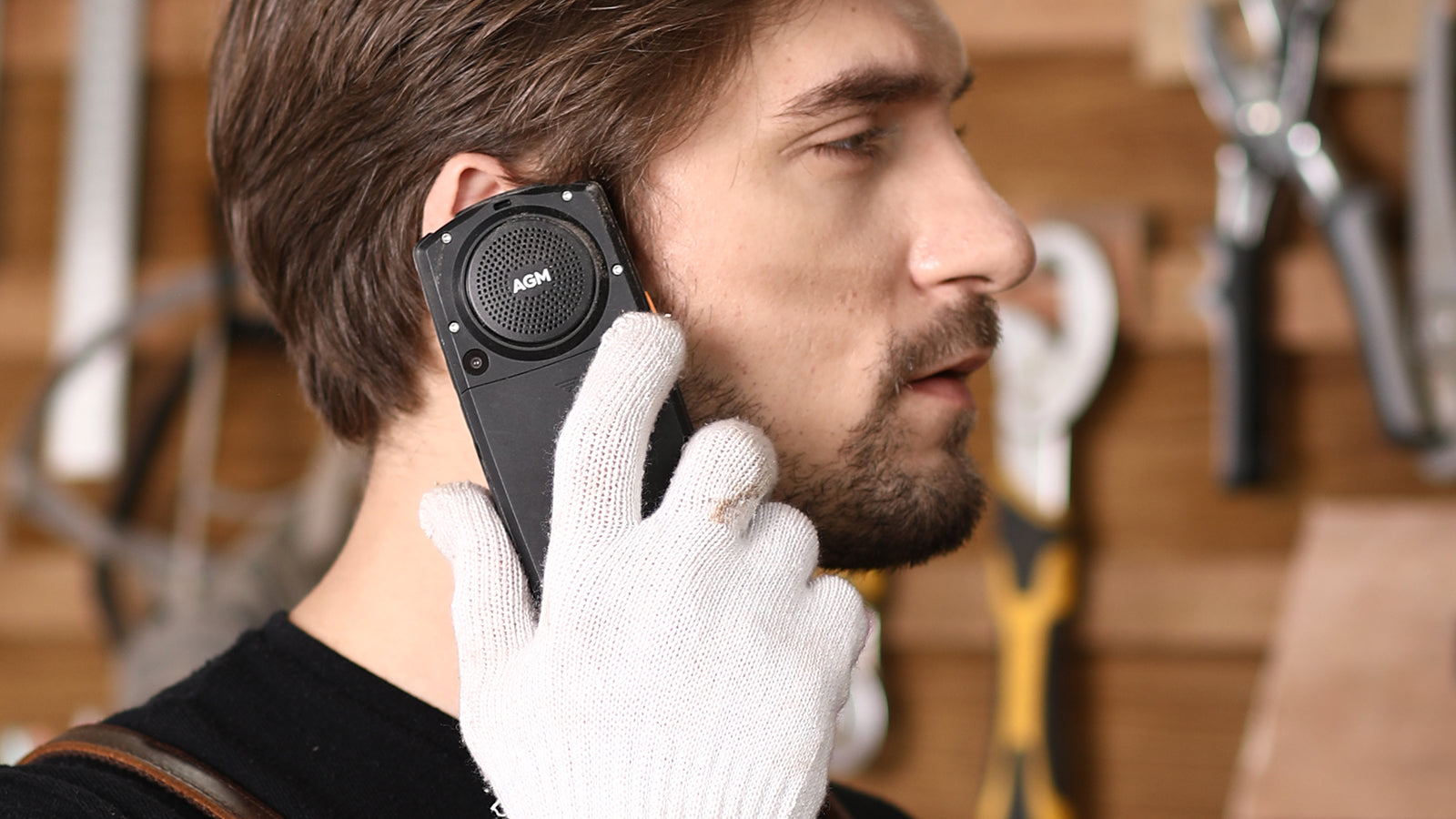
Что нового
The AGM M7 merges the old with the new and still remains smart
Quated from gadgeteer.com by Julian Perry | April 30, 2021
NEWS – These days, just about every day there is a new smartphone on the market offering new features in just about the same form factor that we have become used to. Just recently I learned about a new phone coming to the market. It is the M7 from AGM Mobile.
This phone offers a retro feel while maintaining the specs and capabilities of a modern smartphone.
Some of the specs include the following:
3.5W speaker
IP68, IP69K, and MIL-STD-810H certified
Waterproof (Up to 1.5M for 30 minutes)
Shockproof – withstanding falls from up to 6.5ft on concrete
Resistant to extreme temperatures – ranging from – 20°C to 60°C
Simplified Android ™ 8.1
2.4-inch QVGA Support Touch Panel
Battery: 2500mAh (TYP), removable
Keypad: 21 keys layout
802.11 b/g/n 2.4G
Bluetooth 4.2
Dual Sim
4G LTE-FDD: FDD B2/4/5/7/28AB
USB Type C port
The M7 will officially launch on the AGM Mobile website on April 30th, 2021.If you are looking for a retro phone with some of the latest features, this might just be the one.




